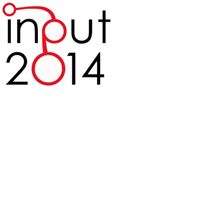Assessment on the Expansion of Basic Sanitation Infrastructure. In the Metropolitan Area of Belo Horizonte - 2000/2010
Abstract
The Metropolitan Area of Belo Horizonte is consisted of 34 municipalities, however approximately 79,68% of its population is concentrated at the conurbation zone with 19 municipalities. This zone presented different expansion axis (North, South, West) throughout the time. This article intends to assess the investments made in basic sanitation infrastructure (access to water supply, sewage collection network and garbage collection service) within the period from the years 2000 to 2010. For this purpose, land cover maps for these years were created to identify the new urban expansion axis. Maps of the census sectors of both years were also made with the percentage of households attended by the basic sanitation services infrastructure, as well as the population density and average income of the householder. Considering the results, we have observed that the investments in basic sanitation infrastructure in the last ten years were not sufficient, given the fact that the region with the largest population of Minas Gerais still has precarious conditions regarding the access to water supply and sewage networks. The least of the problems, but still a problem, is the garbage collection services, given the fact that to collect, the investment is low but it is important to highlight that the data do not bring information about the treatment and disposal of the garbage or sewage, they only inform us were those types of residue are collected.Downloads
References
Costa, H.S.M., Peixoto, M.C.D.(2007), “Dinâmica imobiliária e regulação ambiental: uma discussão a partir do eixo-sul da Região Metropolitana de Belo Horizonte”, in R. bras. Est. Pop., São Paulo, v. 24, n. 2, p. 317-336, jul./dez. 2007.
IBGE (2010), Census 2010.
IBGE (2000), Census 2000.
Tonucci F., Bosco Moura, J. (2012), Dois momentos do planejamento metropolitano em Belo Horizonte: um estudo das experiências do PLAMBEL e do PDDI-RMBH, Dissertation (Master’s Degree) – Faculdade de Arquitetura e Urbanismo, Universidade de São Paulo, São Paulo, 2012.

Copyright (c) 2014 Tema. Journal of Land Use, Mobility and Environment

This work is licensed under a Creative Commons Attribution 4.0 International License.
Authors who publish in this journal agree to the following:
1. Authors retain the rights to their work and give in to the journal the right of first publication of the work simultaneously licensed under a Creative Commons License - Attribution that allows others to share the work indicating the authorship and the initial publication in this journal.
2. Authors can adhere to other agreements of non-exclusive license for the distribution of the published version of the work (ex. To deposit it in an institutional repository or to publish it in a monography), provided to indicate that the document was first published in this journal.
3. Authors can distribute their work online (ex. In institutional repositories or in their website) prior to and during the submission process, as it can lead to productive exchanges and it can increase the quotations of the published work (See The Effect of Open Access)
